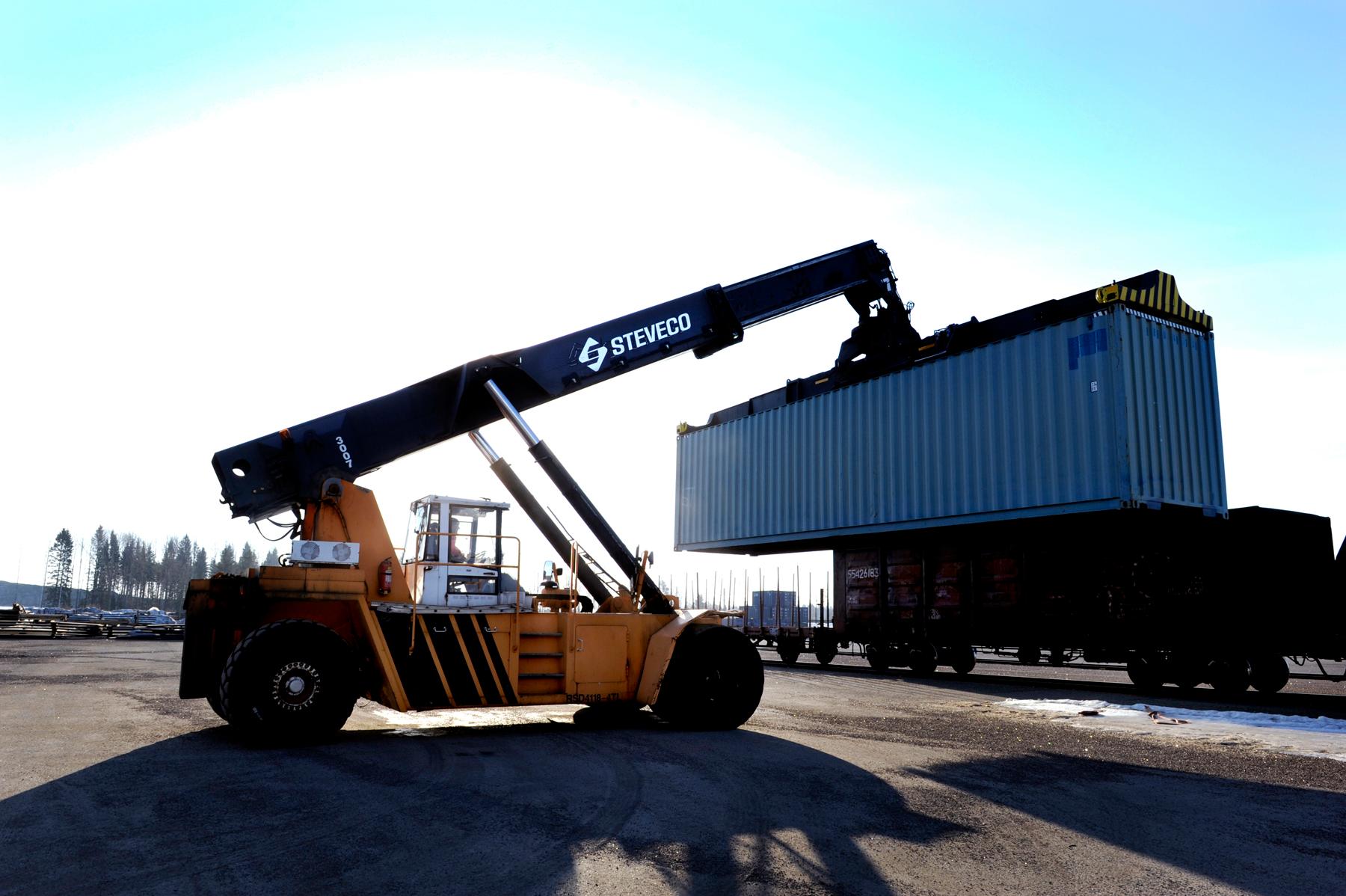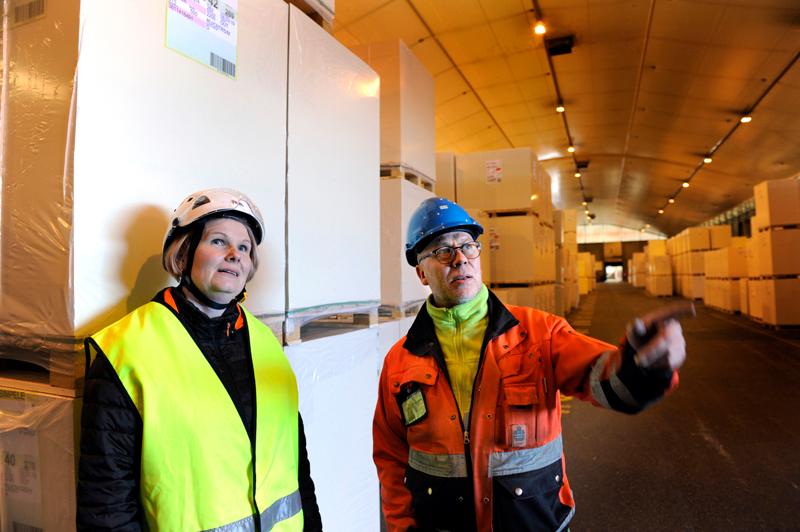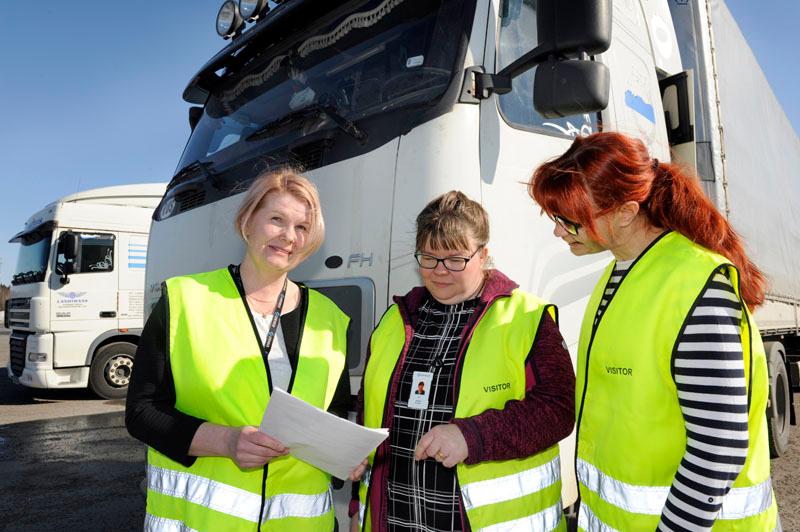From the road to warehouse to rail

Steveco’s Land Traffic Terminal is ready to further concentrate rail transport in Kouvola.
Paper has been loaded in Kouvola on trains heading for St Petersburg since 1875. This is still the case today, and it will continue to be the case in future as well.
“We receive cargo in Kouvola from everywhere in Finland, with some coming in also from Swedish factories and elsewhere in Europe. We unload the trucks and trains into our warehouses, handle the forwarding and reload the goods onto wagons going to Russia and other CIS countries,” explains Pauliina Lindholm, Head of Logistics.
The land terminal includes two warehouse buildings, both with a rail connection right up to their loading docks.
“We can load the wagons straight from the warehouse, and container handling takes place in the open yard.”
Lindholm says that a significant part of the cargo continues the journey not on trains but on trucks, and the terminal is needed for this as well.
“For example, a Russian customer may find it easier to pick up their shipment close to the border instead of at the factory. It is also common for recipients to pick up combined shipments originating from different suppliers and collected at the warehouse.” Lindholm estimates that the terminal dispatches around a hundred truckloads and ten rail wagons towards the eastern border every week.

From the warehouse to trucks and trains
The main products that pass through the warehouse are paper rolls and pallets.
“Of course, we can also handle other piece goods, such as bulk bags or intermediate bulk containers if they contain non-hazardous materials,“ Lindholm says. She points out that customers consider it important and self-evident that the warehouses are kept immaculately clean. Smells and stones are both enemies of paper.
“Obviously, the forklifts we use inside are never driven outdoors.”
Ms Lindholm goes on to explain that customers seldom use the warehouse facilities for long-term storage, but occasionally, larger amounts accumulate while waiting for instructions from the receivers.
“Usually, our 12,500 square metres are more than sufficient, but if needed, we can rent more space.”
Goods flow when information flows
In addition to space issues, another challenge for the warehouse is times when dispatch dates for different batches come at the same time.
“In that situation, it helps that we have a highly tuned operating model that we have honed, especially over the past year,” Lindholm says. The core of the model is the smooth flow of information. The warehouse always knows what is happening in forwarding and vice-versa.
“When a truck arrives, everyone knows what to do. We also do our best to plan the next day’s operations the night before.”
Four forwarders work at the Kouvola terminal, to whom the drivers report on arrival and departure. In the warehouse itself, there are ten employees on both the morning and evening shifts.
“The workflow is streamlined also because the same people are always on duty, and since the beginning of last year, we have been using a warehouse work planning system that shows the position of each batch of cargo on a map.” Lindholm feels it’s a great advantage that the warehouse is able to use a storage management system that is also used at Steveco ports.
“Among other things, we can use the same messaging connections with customers our port terminals use.”

Growth from container traffic to China
The Steveco terminal is located in the Tehola industrial park north of the St Petersburg railway, some five kilometres east of Kouvola railway station. Right next to it, the City of Kouvola and the state government are building a giant rail and road terminal slated for completion by the end of 2022 that will serve, in particular, container traffic between Asia and northern Europe.
“There are high expectations that the new terminal will create more jobs and new business opportunities throughout the region. We regard this as a positive development,” Lindholm says.
Container traffic to China started already two years ago.
“For example, last winter we containerised an entire train for one of our customers, meaning that we reloaded all the cargo into containers,” Lindholm says.
Marko Tuokko, Sales Manager at Steveco, believes that growth in container traffic will lead not just to containerising cargo, but also to unloading containers from China.
“We take care of import customs clearance, unload the goods at the warehouse and handle national distribution from the warehouse to recipients. It is important that our concept for doing this is flexible and works flawlessly,” Tuokko says.
Kouvola Land Traffic Terminal
- first containers handled in 2001
- warehouse opened in 2003
- two warehouse buildings, totalling 12,500 sq.m
- outdoor space flexibly available
- handles approximately 10,000 tonnes of cargo monthly
Services
- forwarding
- warehousing
- cargo handling
- rail and road transport
How Kouvola became a lively rail hub
The railway from Riihimäki to St Petersburg was completed in 1870. A couple of years later, wood pulping plants and paper machines were set up in the region. Wood pulp was quickly replacing the traditional raw material for paper, cotton rag pulp, and an attractive market was within reach in the east. Paper and cardboard were first transported by horse-drawn carriages to railway stations and loaded onto trains. The first station in the area, Koria (then Kymi), however, was thought by paper manufacturer Axel Wilhelm Wahren to be located on the wrong side of the Kymijoki river. He contacted the railway administration to apply for a new station on the east side of the river, and the Kouvola railway station was inaugurated in 1875. Soon, tracks were leading from Kouvola north to Savonia with its wood raw material reserves, and south to the port city of Kotka. Kouvola eventually became one of Finland’s busiest rail hubs and the country’s 11th largest city.
**
Text Marianna Salin, photos Johannes Wiehn

